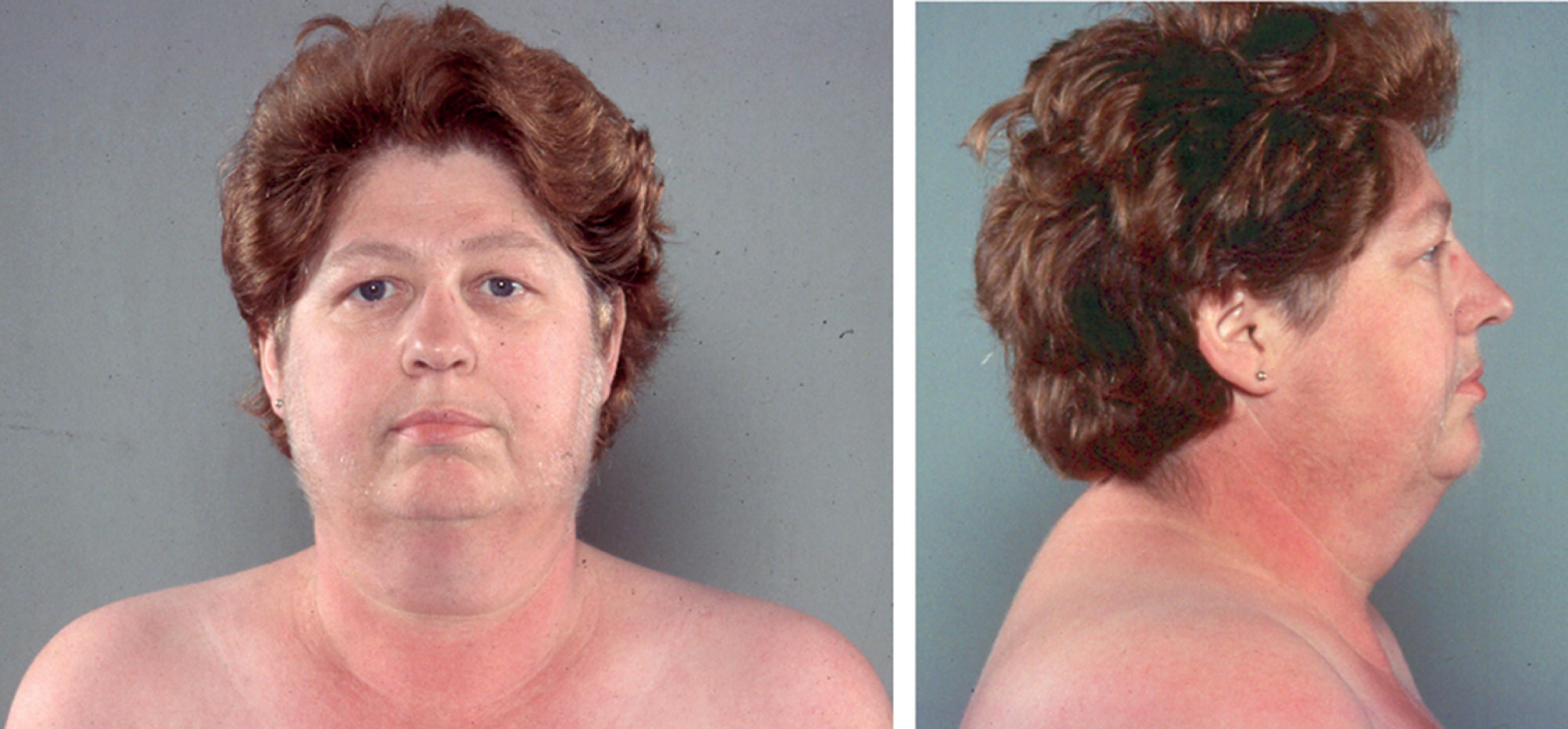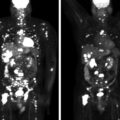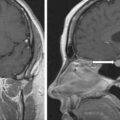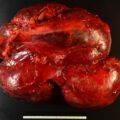Most patients with corticotropin (ACTH)-dependent Cushing syndrome (CS) will have an ACTH-secreting pituitary microadenoma. Approximately 15% of patients with ACTH-dependent CS have an ectopic source of ACTH secretion. The most common neoplasms associated with ectopic ACTH secretion are bronchial carcinoid (≈25%), pancreatic neuroendocrine tumor (≈16%), occult and unlocalized tumor (≈16%), small cell lung cancer (≈11%), medullary thyroid carcinoma (≈9%), other neuroendocrine tumors (≈7%), thymic carcinoid (≈5%), and pheochromocytoma (≈3%). The main clues that a patient may have ectopic ACTH-dependent CS include severe CS as evidenced by spontaneous hypokalemia and 24-hour urinary free cortisol (UFC) >1000 mcg, rapid onset of CS (sometimes so rapid that there is not time to develop the typical physical stigmata of CS), previous diagnosis of a neuroendocrine tumor, and male sex. Herein we present a case of ectopic secretion of ACTH and corticotropin-releasing hormone (CRH) from a pheochromocytoma causing severe CS.
Case Report
The patient was a 49-year-old woman who presented with a 1-month history of lower extremity edema, polydipsia, and polyuria. She had a 6-year history of untreated hypertension. She had no recent weight gain. On physical examination her blood pressure was 210/115 mmHg. She appeared cushingoid with a plethoric face, lanugo-type facial hair, central obesity, red abdominal striae, and edema ( Fig. 63.1 ).

INVESTIGATIONS
The laboratory test results are shown in Table 63.1 . Severe hypercortisolism was documented with a 24-hour urinary free cortisol excretion that was more than 100-fold elevated above the upper limit of normal. Although the patient was clearly cushingoid on physical examination, there was a mismatch between the severity of hypercortisolism and the physical stigmata of CS, which was consistent with a short duration of disease. Computed tomography (CT) of the chest and abdomen showed a 4-cm left adrenal mass ( Fig. 63.2 ). The 24-hour urine for total metanephrines and fractionated catecholamines confirmed that the patient had an adrenergic pheochromocytoma (see Table 63.1 ). Adrenal venous sampling confirmed a gradient of both ACTH and CRH from the left adrenal gland ( Box 63.1 ).
| Biochemical Test | Result | Repeat Test Result | Reference Range |
| Sodium, mEq/L | 139 | 135–145 | |
Potassium, mEq/L | 3.6 | 3.6–5.2 | |
Fasting plasma glucose, mg/dL | 312 | 70–100 | |
8 am serum cortisol, mcg/dL | 74 | 7–25 | |
ACTH, pg/mL | 550 | 10–60 | |
CRH, pg/mL | 2 | 11 | <34 |
24-Hour urine: | |||
Free cortisol, mcg | 12,454 | <108 | |
Total metanephrines, mcg | 5.4 | <1.3 | |
Norepinephrine, mcg | 476 | <80 | |
Epinephrine, mcg | 1124 | <20 | |
Dopamine, mcg | 279 | <400 |
Stay updated, free articles. Join our Telegram channel

Full access? Get Clinical Tree








